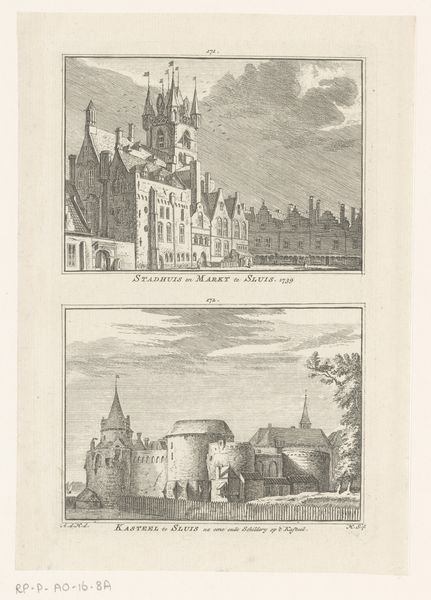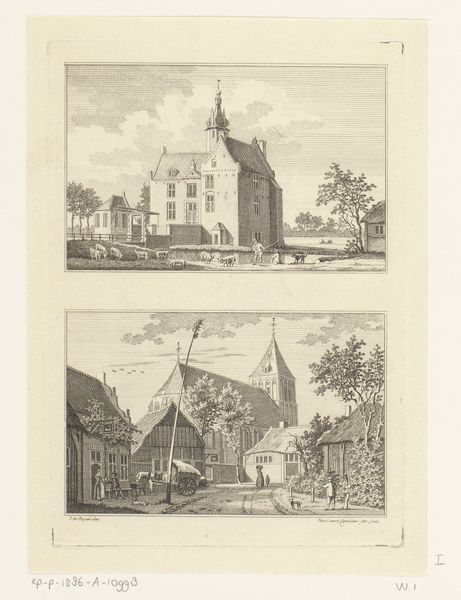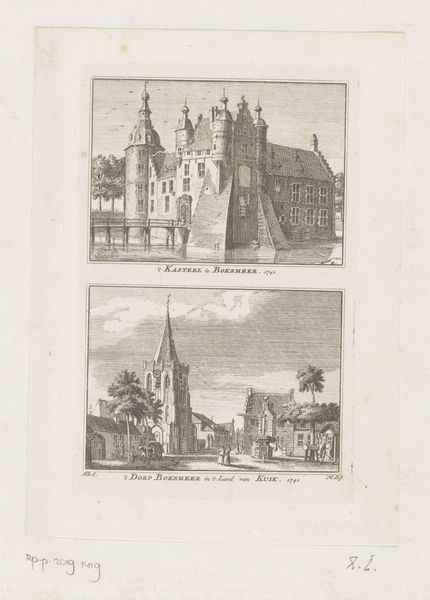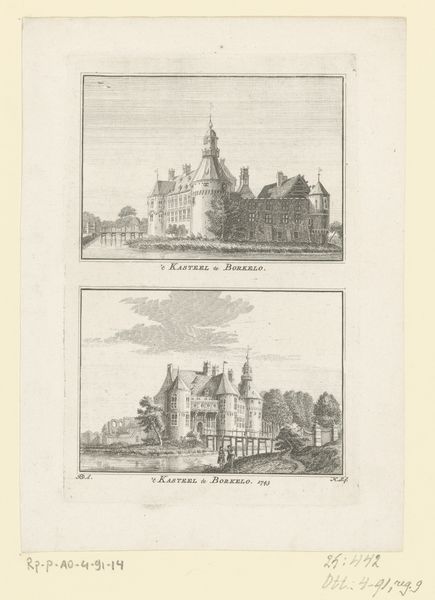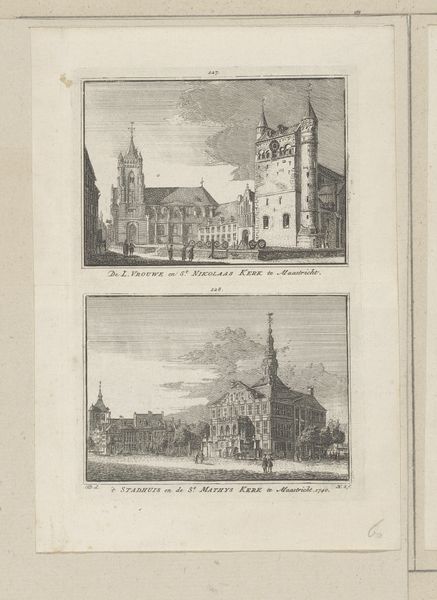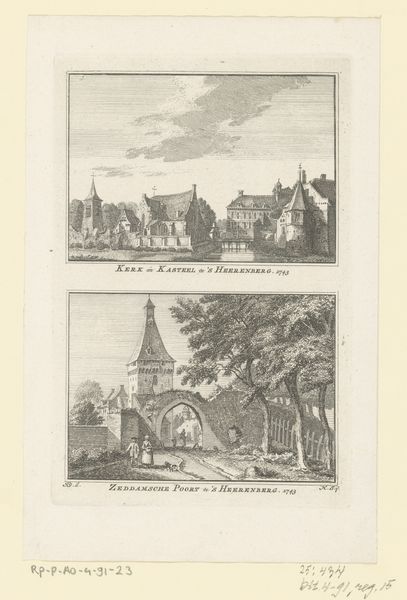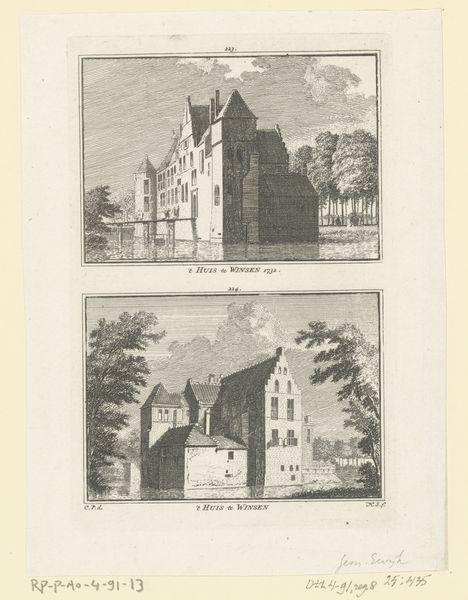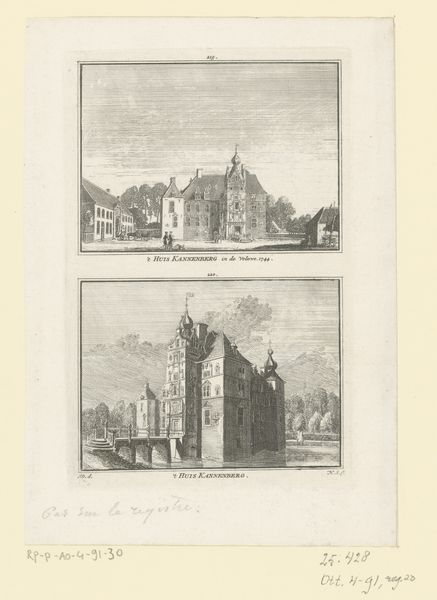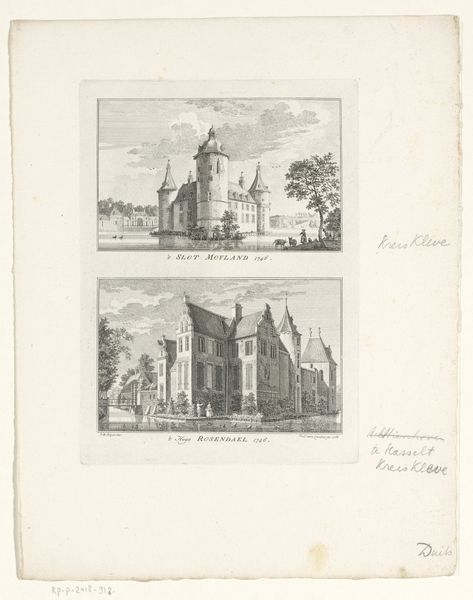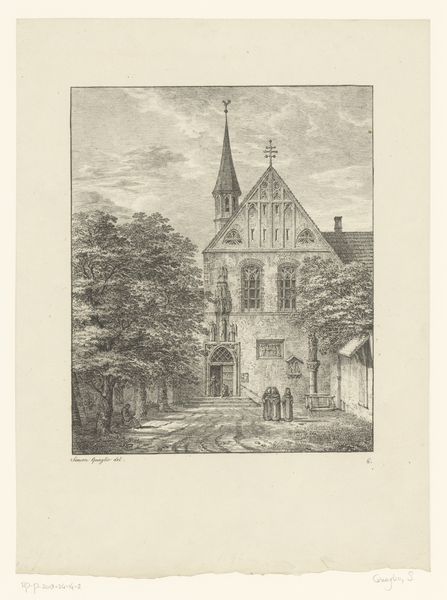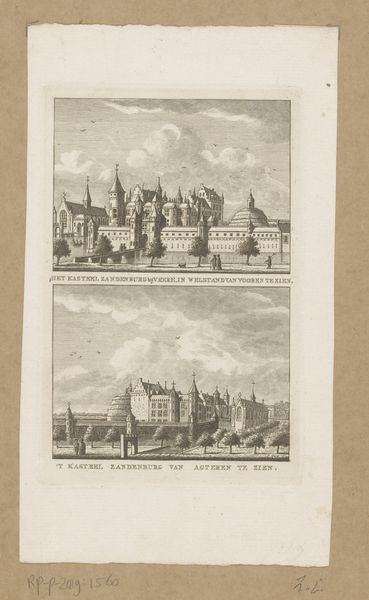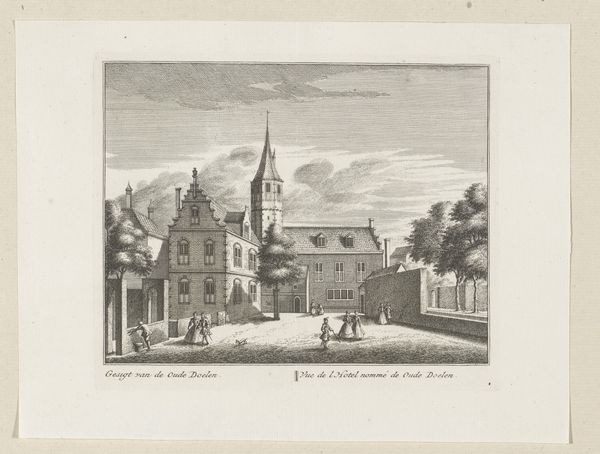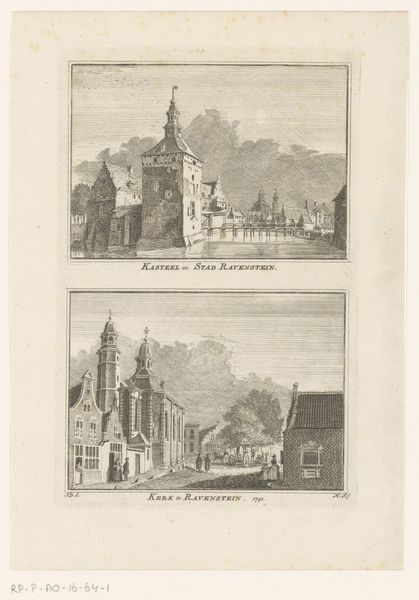
engraving, architecture
#
dutch-golden-age
#
cityscape
#
engraving
#
architecture
Dimensions: height 165 mm, width 105 mm
Copyright: Rijks Museum: Open Domain
Curator: This engraving from 1745, titled "Two Views of Zutphen," provides us with contrasting urban structures, each demanding its own semiotic reading. Editor: Yes, immediately, the high contrast within each framed view strikes me. A rigorous black-and-white composition lends an almost somber feel to what are, presumably, sites of civic pride. Curator: Indeed. Hendrik Spilman meticulously captures the Raadhuis and the Groote Kerk, organizing these representations through linear perspective. Consider the tonal shifts within the cloudscape of the Raadhuis image. This draws the eye upwards and provides what almost appears as a formal contrast between the imposing weight of political and religious buildings. Editor: Focusing on its historical setting, Zutphen in the mid-18th century would have experienced these buildings not just as static architecture but as active spaces for shaping public life and religious observance. I’m particularly drawn to the minute figures positioned near the town hall. Their presence establishes a hierarchy of space. Curator: Observe how the textures, meticulously rendered by Spilman's engraving technique, differentiate materials: stone versus brick, the organic density of foliage versus the geometric order of fenestration. The buildings' inherent geometry allows a very careful exploration of line. Editor: The positioning, or rather the doubling, makes me wonder about civic identity in Zutphen. Were the messages these buildings projected aligned, or were they caught up in the tensions inherent between temporal and spiritual authority? What would people, caught between both structures, think? Curator: It raises questions of civic symbology, doesn’t it? But let’s also appreciate the pure craft: the precision in Spilman's line work and in the composition, reflecting an almost cartographic rigor in the portrayal. Editor: Spilman’s art reminds us that cities are not simply collections of buildings, but living narratives shaped by history and collective experience, a physical record. The scale almost miniaturizes a community within buildings. Curator: So, a masterful study in contrasts, then, leaving the contemporary audience with plenty of reading in its architecture and texture. Editor: Yes, a perfect intersection between buildings and a sense of public place, fixed in this delicate, almost fragile format.
Comments
No comments
Be the first to comment and join the conversation on the ultimate creative platform.
